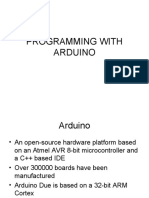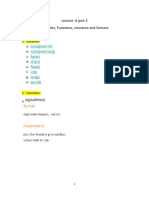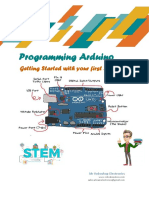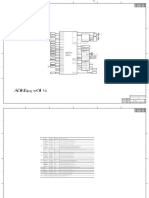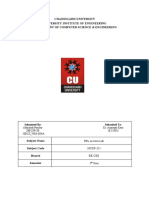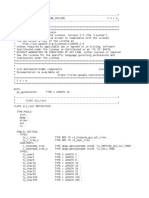0% found this document useful (0 votes)
52 views8 pagesAll Project Coding1
The document outlines several easy Arduino sensor projects for young innovators, including a clap switch, temperature display, light detector, burglar alarm, and LED fading with a potentiometer. Each project includes a brief description, required components, and sample code. Additionally, it provides teaching tips and explains the use of Serial communication in Arduino programming.
Uploaded by
sharmanimish411Copyright
© © All Rights Reserved
We take content rights seriously. If you suspect this is your content, claim it here.
Available Formats
Download as PDF, TXT or read online on Scribd
0% found this document useful (0 votes)
52 views8 pagesAll Project Coding1
The document outlines several easy Arduino sensor projects for young innovators, including a clap switch, temperature display, light detector, burglar alarm, and LED fading with a potentiometer. Each project includes a brief description, required components, and sample code. Additionally, it provides teaching tips and explains the use of Serial communication in Arduino programming.
Uploaded by
sharmanimish411Copyright
© © All Rights Reserved
We take content rights seriously. If you suspect this is your content, claim it here.
Available Formats
Download as PDF, TXT or read online on Scribd
/ 8

































